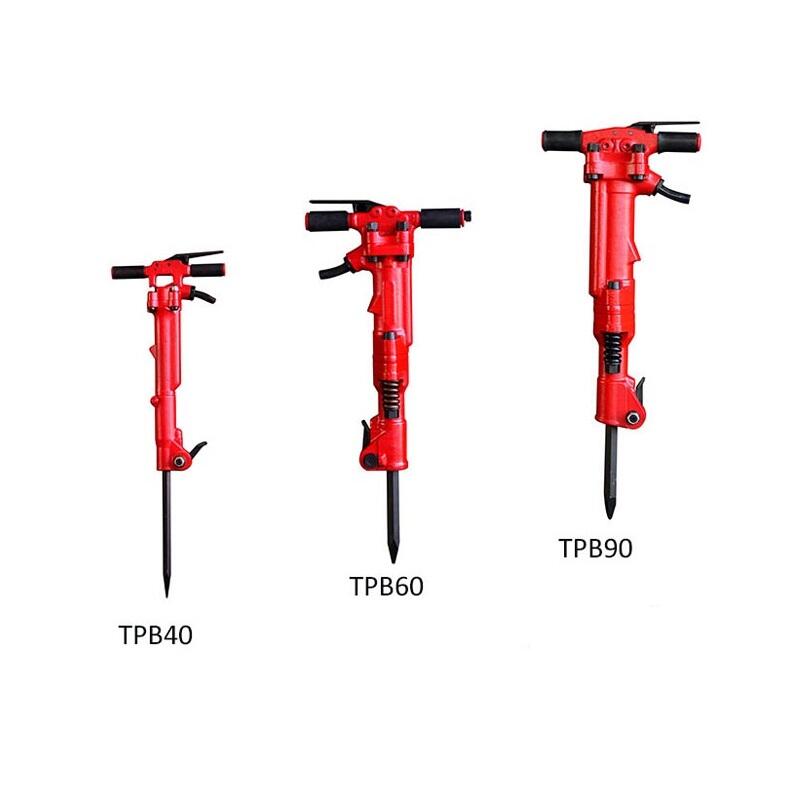The construction and demolition industry has witnessed remarkable advancement in pneumatic breaker technology, particularly in terms of safety features. These powerful tools, essential for breaking concrete, asphalt, and other hard materials, now incorporate sophisticated safety mechanisms that protect operators while enhancing productivity. Understanding these safety features is crucial for construction professionals who prioritize both efficiency and worker protection.
Modern pneumatic breaker designs reflect years of research and development, focusing on operator comfort, injury prevention, and equipment longevity. The integration of advanced safety features has transformed these tools from simple breaking devices into sophisticated pieces of equipment that meet stringent safety standards while delivering superior performance.
The latest pneumatic breaker models feature state-of-the-art vibration dampening systems that significantly reduce the harmful effects of prolonged tool usage. These systems utilize specialized rubber mounting and spring mechanisms that absorb and dissipate vibration before it reaches the operator's hands. This technology has revolutionized the way construction workers interact with their equipment, allowing for extended periods of operation without increasing the risk of vibration-related injuries.
Recent studies indicate that advanced anti-vibration systems can reduce operator exposure to harmful vibrations by up to 70%, dramatically decreasing the likelihood of developing hand-arm vibration syndrome (HAVS). This improvement represents a significant advancement in occupational safety and demonstrates the industry's commitment to worker well-being.
Contemporary pneumatic breaker handles incorporate ergonomic principles that work in tandem with vibration reduction systems. These handles feature specialized grips with shock-absorbing materials and optimized angles that promote natural hand positioning. The thoughtful design reduces operator fatigue and minimizes the risk of repetitive strain injuries, allowing for increased productivity without compromising safety.
Modern pneumatic breaker manufacturers have made significant strides in reducing operational noise levels. Advanced sound dampening technology includes specially designed mufflers and acoustic enclosures that minimize noise without compromising power output. These features protect both operators and nearby workers from excessive noise exposure, which can lead to hearing damage over time.
The latest models incorporate multi-layer sound insulation and precision-engineered exhaust systems that can reduce noise levels by up to 15 decibels compared to traditional designs. This reduction significantly improves workplace communication and reduces the risk of noise-induced hearing loss.
Supplementary acoustic protection features include removable shields and barriers that further contain and redirect sound waves. These components can be particularly valuable in urban construction settings where noise pollution regulations are strict. The ability to add or remove acoustic barriers also provides flexibility for different working environments and requirements.
Advanced pneumatic breaker models now feature sophisticated impact control systems that automatically adjust the stroke length and force based on the material being broken. This intelligent adaptation not only improves efficiency but also prevents tool damage and reduces operator fatigue. The system monitors resistance and adjusts power output accordingly, ensuring optimal performance while maintaining safety.
The automatic stroke adjustment technology also helps prevent the tool from free-running when breakthrough occurs, reducing the risk of operator injury and equipment damage. This feature is particularly valuable when working with materials of varying density or strength.
Modern impact control systems often incorporate energy recovery mechanisms that capture and reuse kinetic energy from each stroke. This innovation not only improves efficiency but also provides more controlled operation, reducing the risk of unexpected tool behavior. The system helps maintain consistent breaking force while minimizing energy waste and operator strain.

Safety-conscious pneumatic breaker designs include rapid shutdown systems that can immediately stop tool operation in emergency situations. These mechanisms are typically activated through easily accessible switches or automatic sensors that detect abnormal operation patterns. The quick-stop feature provides an essential layer of protection against accidents and equipment malfunction.
Advanced models incorporate dual-action safety triggers and dead-man switches that immediately cease operation if the operator loses control or releases the grip. This failsafe mechanism significantly reduces the risk of injury in unexpected situations.
Modern pneumatic breakers feature sophisticated overload protection systems that monitor operating conditions and automatically shut down the tool if unsafe conditions are detected. These systems track factors such as temperature, pressure, and mechanical stress to prevent equipment damage and potential operator injury.
Contemporary pneumatic breaker designs often include built-in dust suppression systems that minimize airborne particles during operation. These systems typically utilize water sprays or vacuum attachments to capture dust at the source, protecting operators from respiratory hazards and improving visibility in the work area.
The latest dust management technologies can remove up to 99% of harmful silica dust, significantly reducing the risk of respiratory diseases and meeting increasingly stringent workplace safety regulations.
Supplementary to dust suppression, modern pneumatic breakers incorporate advanced filtration systems that prevent dust and debris from entering the tool's mechanical components. This protection extends equipment life while maintaining optimal performance and safety standards. Regular maintenance of these filtration systems ensures consistent tool operation and operator protection.
Professional safety inspections should be conducted at least quarterly, with daily visual checks before operation. Critical components like anti-vibration systems and emergency shutdown mechanisms should be tested monthly to ensure proper functionality.
While requirements vary by region, most jurisdictions require operators to complete certified training programs covering tool operation, safety features, and maintenance procedures. Additional certifications may be needed for specialized applications or high-risk environments.
Extreme temperatures and moisture can impact the effectiveness of safety features, particularly vibration dampening systems and dust suppression mechanisms. Regular maintenance and appropriate storage become even more critical in challenging weather conditions to ensure safety features remain fully functional.